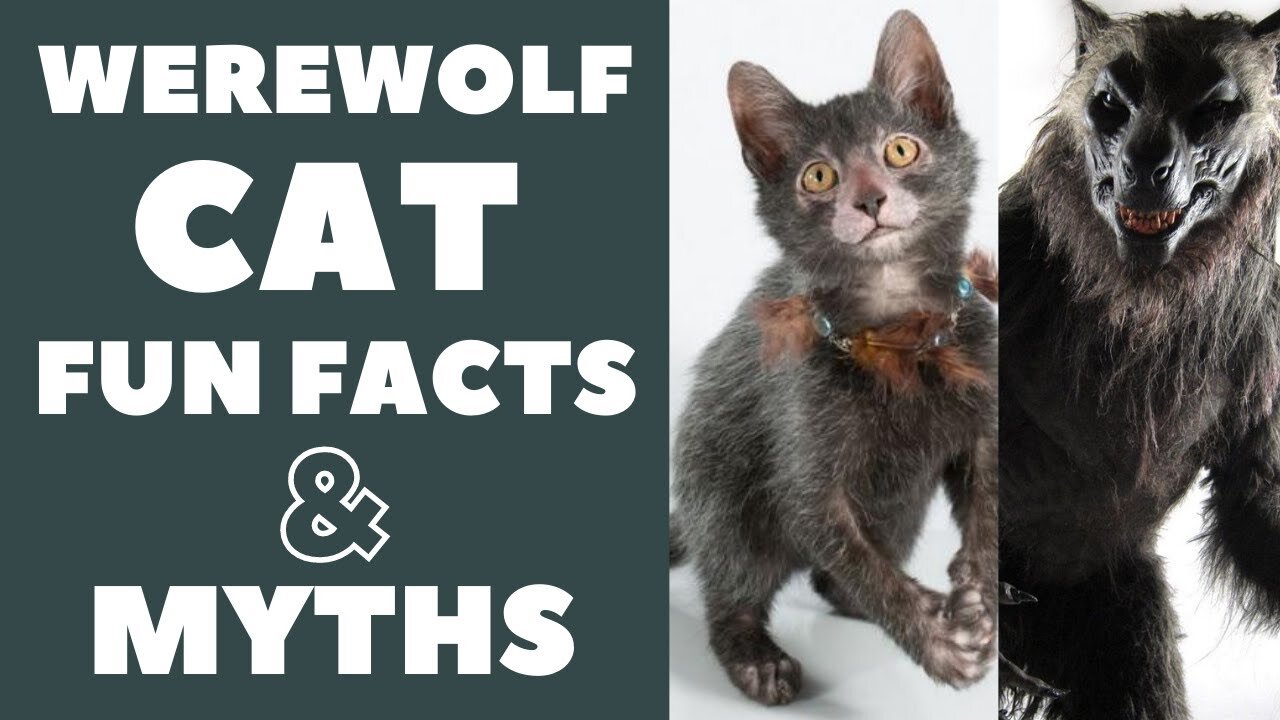Premium Only Content

Lykoi Cats 101 : Fun Facts & Myths
In today's video, we are going to talk about the most interesting facts and myths about the Lie koi breed.
So you have been seeing all the photos of a so-called “werewolf cat?” Maybe you thought they were an internet joke, or maybe a cat with a skin problem? That’s not the case at all. They are a new breed of cat called “Lie koi,” and they’re taking over the internet.
Contrary to what many people think, Lie koi cats are not a new invention nor were they created in a lab by mad scientists. Their unique appearance is the result of a recessive natural mutation from typical domestic shorthair cats, that gives them the appearance of a werewolf.
Although these ‘werecats’ have been reported several times over the last 15 years or so, it wasn’t until two unrelated litters were found in Virginia and Tennessee, that (after a lot of extensive testing) a breeding program began. That’s when they were named “Lie koi,” which roughly translates to “Wolf Cat” in Greek, a very fitting name for these unique cats.
1. What Do Lie koi Look Like?
This new cat breed is rather unique in appearance. You might actually take them for a Sphynx or a Devon! The Lie koi cats have grizzled dark fur, with no undercoat. Around their faces, the kitties have patches around their eyes and nose where you can see a bit of pink skin showing through. This gives them the appearance of perhaps being hairless. Additional bald patches are found on their toes and tails. These special kitties have a long nose with a black tip, that makes them look very similar to a wolf.
Along with their unusual hair, Lie koi cats have large yellow eyes, with large, triangular ears. Their bodies are slim and muscular. Their entire appearance truly resembles a wolf! However, don’t be alarmed! Lie koi cats have wonderful personalities.
2. Are Lie koi cats family friendly?
Lie kois are descended from feral cats, so they are great mousers! If you play with your Lie koi kitty, she will completely become caught up in the “hunt,” ready to pounce when the time’s right! These cats tend to be intelligent, and they’re not afraid to use their intellect when presented with a new situation. You may notice the Lie koi cat first considering the new circumstances, such as meeting new animals or humans. However, once they’ve warmed up to someone or another pet, they’re loyal for life.
Lie koi cats tend to be very active and have tons of energy. Some of thought these characteristics are holdovers from their feral forebears. They enjoy staying busy and may have other things they want to get done first, but you’ll eventually find the werewolf cat laying in your lap, wanting your attention and a nice scratch behind her ears. There is one more wolfish trait that has come out in the Lie koi cats. They prefer to hunt in packs! Most cats like to hunt alone, but not the Lie koi . They will come together and chase down prey as a team, rather than being loners in the hunt.
Some people have said their Lie koi cats seem more like dogs than cats! Not only do they hunt in packs, but these werewolf cats also enjoy a good game of fetch and chase—just like their canine brothers and sisters!
Expect your Lie koi to be a loving fur baby, but one that’s highly intelligent and very active.
3. Lie koi cats are generally healthy.
With the breed being so new, it’s not yet been determined what the lifespan of a Lie koi cat will be. However, with good health and living indoors, it’s thought that Lie koi cats will have the same average lifespan of other domestic cat breeds, which is about 15-20 years of age.
Overall, they seem to be healthy cats. Some issues that have been noticed with the breed. These include oil gather in their ears and claws, due to their short, sparse coats. This is something that should be checked often if you adopt a Lie koi .
Lie koi kittens appear to develop slower than kittens from other breeds. They require a lot of socialization to grow up into happy, socially adjusted adult cats. Kittens are usually ready to leave their mothers by about 12 to 14 weeks of age.
-
 50:53
50:53
Steve-O's Wild Ride! Podcast
2 days ago $1.50 earnedAre The Trailer Park Boys Smarter Than They Seem? | Wild Ride 258
6.46K8 -
 2:58:32
2:58:32
IsaiahLCarter
4 hours agoAPOSTATE RADIO EPISODE 012: Closing Down and Proceeding on Signal, with Trammell Thompson
26.1K7 -
 11:09
11:09
Forrest Galante
2 hours agoIs The Mammoth REALLY Coming Back From Extinction?
12.6K21 -
 1:00:52
1:00:52
Mike Rowe
6 days agoThe Sun Never Sets On Gene Simmons | #432 | The Way I Heard It
44.1K116 -
 1:58:31
1:58:31
Adam Carolla
13 hours ago $13.32 earnedJay Leno Does What Modern Politics Won’t: Taking Care of Family Without a Press Conference
40.7K11 -
 LIVE
LIVE
Akademiks
5 hours agoDay 2/30. Smurk on Stream?? 50 cent keep going at Big Meech. Kendrick to Buy Kanye West Catalog?
2,215 watching -
 1:35:28
1:35:28
BlackDiamondGunsandGear
8 hours agoThe TRUMP SLUMP?
22.3K2 -

SilverFox
3 hours ago🔴LIVE - OBLIVION IS BETTER THAN SKYRIM NOW
16.3K -
 LIVE
LIVE
SpartakusLIVE
7 hours agoDuos w/ StevieT || Trios or Quads Later?!
160 watching -
 LIVE
LIVE
OhHiMark1776
8 hours ago🟢04-27-25 ||||| Halo Multiplayer Rumble: No. 13 ||||| Halo MCC (2019)
285 watching